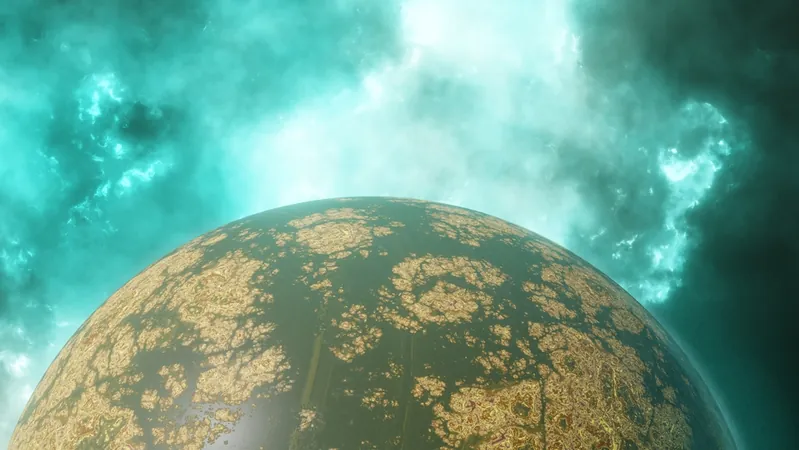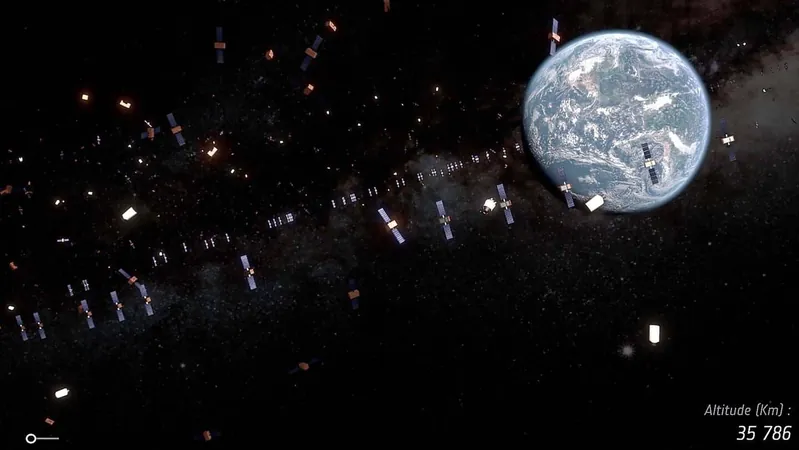
Revolutionary Findings: Super-Earths Are More Common Than You Think!
2025-04-28
Author: Yu
A Cosmic Revelation About Super-Earths
In a groundbreaking discovery, the Korea Microlensing Telescope Network (KMTNet) has revealed that super-Earth exoplanets are far more prevalent across the universe than previously imagined. An international team of astronomers conducted an extensive study of light anomalies caused by a newly identified planet's host star, confirming that these massive worlds can orbit at great distances from their stars, much like our own gas giants.
Tracking Down Super-Earths: The Power of Microlensing
Finding planets that orbit far from their stars has long been a challenge for astronomers. However, thanks to the power of microlensing, researchers estimate that for every three stars in our galaxy, at least one likely hosts a super-Earth with an orbital period similar to Jupiter's. This suggests that these intriguing planets are not just rare anomalies but are instead quite common across the cosmos.
How Microlensing Works: A Glimpse into the Universe
Microlensing occurs when a massive object distorts space-time, causing light from background stars to bend, which results in a temporary increase in brightness. This phenomenon, observable for hours or even months, allows astronomers to identify distant worlds that otherwise would remain hidden. In fact, during this study, microlensing signals led to the discovery of OGLE-2016-BLG-0007, a super-Earth with a mass roughly double that of Earth and an orbit wider than Saturn.
The Implications of Super-Earth Discoveries
This seminal research has enabled scientists to categorize exoplanets into two distinct groups—super-Earths and Neptune-like planets versus gas giants such as Jupiter and Saturn. Improved understanding of the distribution of these exoplanets will yield crucial insights into their formation and evolution, sparking new discussions about planetary science.
The Great Mystery of Planet Formation Processes
To unravel the mechanisms behind super-Earth formation, researchers compared their findings to theoretical simulations. They discovered that the paths to creating these massive planets could greatly differ. "The leading theory for gas giant formation is runaway gas accretion, while other theories suggest it could involve both accretion and gravitational instability," stated co-author Andrew Gould, reflecting the ongoing debates within astrophysics.
The Challenges Ahead for Astronomers
Astronomers face significant hurdles in finding microlensing events—identifying a star event is challenging enough, but finding one with a planet is considerably more difficult. Richard Pogge, another co-author, described the difficulty succinctly: "We have to scrutinize hundreds of millions of stars to find even a small number of these events." Only 237 of over 5,000 super-Earths discovered so far have been identified through this method.
Towards a New Era of Cosmic Discovery
Equipped with more advanced technology and three specialized telescopes in South Africa, Chile, and Australia, the KMTNet project stands at the forefront of this research. As scientists continue to advance their tools and collaborative efforts, they are transforming abstract theories into concrete discoveries. Pogge encapsulated the excitement of this work: "We’re like paleontologists piecing together the history of the universe and the governing processes that shape it." This pioneering exploration is not just about locating planets; it's about reshaping our understanding of the cosmos.





 Brasil (PT)
Brasil (PT)
 Canada (EN)
Canada (EN)
 Chile (ES)
Chile (ES)
 Česko (CS)
Česko (CS)
 대한민국 (KO)
대한민국 (KO)
 España (ES)
España (ES)
 France (FR)
France (FR)
 Hong Kong (EN)
Hong Kong (EN)
 Italia (IT)
Italia (IT)
 日本 (JA)
日本 (JA)
 Magyarország (HU)
Magyarország (HU)
 Norge (NO)
Norge (NO)
 Polska (PL)
Polska (PL)
 Schweiz (DE)
Schweiz (DE)
 Singapore (EN)
Singapore (EN)
 Sverige (SV)
Sverige (SV)
 Suomi (FI)
Suomi (FI)
 Türkiye (TR)
Türkiye (TR)
 الإمارات العربية المتحدة (AR)
الإمارات العربية المتحدة (AR)